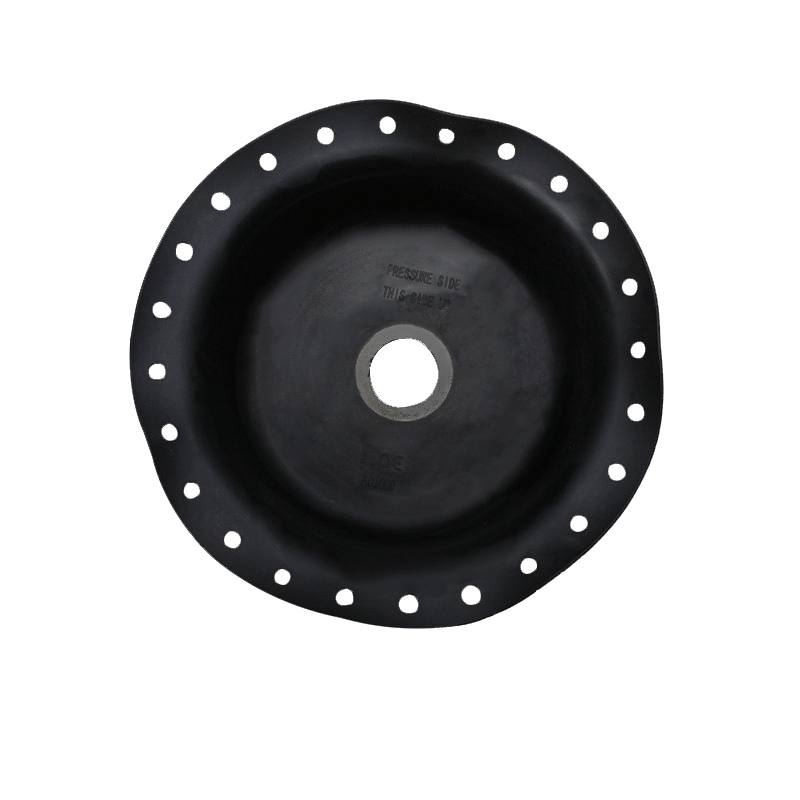
Hangzhou Biaozheng Rubber Plastic Fittings Factory
Professional rubber diaphragm research design and manufacturing

Hangzhou Biaozheng Rubber Plastic Fittings Factory
Professional rubber diaphragm research design and manufacturing
A pneumatic actuator diaphragm works by compressing and […]
A pneumatic actuator diaphragm works by compressing and expanding pressurized air. This enables the actuator shaft to move upward. The area of the diaphragm determines the maximum force. The maximum air pressure of a standard diaphragm is around 1.03 barg or 15 psig. However, larger diaphragms can be made to handle higher air pressure.
Pneumatic actuators are used for regulating various functions in an industrial setting. They provide a control signal to the plant, whose position corresponds to the mechanical motion of the diaphragm. Pneumatic actuators can either be single or double acting, and they have different operating modes. Typically, they are used in pneumatic instrumentation. However, they are also available in high-pressure versions.
Diaphragm actuators are among the most economical actuators. They are available in a variety of sizes, including bsp threaded and dn15-dn50 flanged connections. Some are fitted with a handwheel for ease of operation.
A pneumatic actuator diaphragm is a valve that is operated by pressure. The air pressure in the valve chamber is typically six bars or more. The pressure of the actuator is adjusted according to the pressure in the positioner. The pressure of the regulator is then compared to the desired position, which is usually represented by an analogue signal ranging from 4 to 20 mA.

A diaphragm is a thin, flexible membrane that is used to actuate a valve. A pneumatic actuator diaphragm can be direct or reverse acting. It is typically fast and easy to use. The diaphragm is designed to operate a particular type of valve.
Pneumatic actuator diaphragm valves are frequently used in throttling applications. The operating pressure and temperature of the valve are two important factors in choosing the correct size of the valve. These factors, along with the volume of fluid flowing through the system, can help determine the correct size of the valve.
Pneumatic actuators can be designed to generate high output forces and a wide range of torque. The output force of a Pneumatic Actuator is the difference between two opposing forces, which results in a high torque. The torque generated depends on the angle from which the air pressure enters the actuator, which moves the vane in a quarter-turn.
The 3024C actuator can be configured as a direct acting or reverse acting actuator. These actuators provide reliable operation of automatic control valves. They are often used in construction equipment. They offer a large angular range and can be installed vertically. If you decide to use a Pneumatic Actuator, make sure to choose an actuator with a self-centering mechanism that requires no special alignment. If you use an electric-motor-driven Pneumatic Actuator, be sure to mount the motor above the gear box, as it prevents gear oil from soaking the motor windings.
A Pneumatic Actuator Diaphragm Valve is a good option for hazardous fluid applications. This type of valve does not allow any impurities to enter the fluid, which prevents flooding. It is also ideal for corrosive fluids since it prevents contamination of the fluid. Its body must be corrosion-resistant, otherwise the valve may corrode. It is also only suitable for moderate temperatures.
We are Custom Rubber Diaphragm Valves Manufacturers and Pneumatic Actuator Valve Diaphragm Suppliers in China. All sub-suppliers are inspected and reviewed, and all product procurements are conducted only in qualified sub-suppliers. The raw materials, purchased parts, and outsourced parts provided by the sub-suppliers must undergo a rigorous review when entering the factory.

Copyright © Hangzhou Biaozheng Rubber Plastic Fittings Factory All Rights Reserved. Technical Support:Smart cloud >